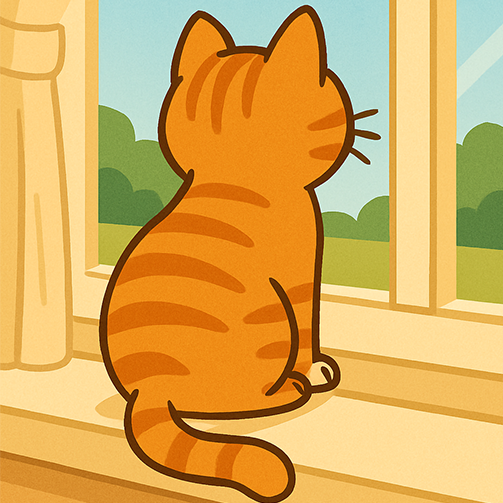Cats have always been mysterious creatures graceful, independent, and sometimes a little aloof. But beyond their charm, our feline friends may also be carrying secrets about one of today’s most puzzling human conditions: Long COVID.
Scientists at the University of California, Davis, recently uncovered surprising connections between lingering illnesses in cats and post-viral syndromes in humans. For cat lovers, this study doesn’t just highlight the resilience of our companions it shows how deeply intertwined their health is with ours.
The Cat Illness That Mirrors Ours
The focus of the research is Feline Infectious Peritonitis (FIP), a serious disease caused by a feline coronavirus. For years, FIP has devastated cat populations, often leaving little hope for survival.
What intrigued researchers is how cats that survive the initial infection sometimes continue to suffer from long-lasting immune problems. Their bodies, even after the virus is gone, remain inflamed, exhausted, and unable to fully recover. Sound familiar? That’s because it mirrors what many humans experience with Long COVID persistent fatigue, brain fog, and lingering inflammation long after the original infection.
The Breakthrough Study
At UC Davis, scientists experimented with a combination of antiviral drugs and mesenchymal stem cell therapy (a type of regenerative treatment). The goal was not just to eliminate the virus, but to reset the immune system so that cats could fully heal.
The results were promising:
Cats showed reduced chronic inflammation.
Their immune systems regained balance instead of remaining in “overdrive.”
Symptoms that lingered after infection began to fade.
For researchers, this opened a window into how similar treatments might one day help humans suffering from post-viral conditions like Long COVID.
Why It Matters to Cat Lovers
For those of us who adore cats, this study resonates on two levels as caregivers to our pets, and as humans navigating our own health challenges.
Hope for Cats with FIP
FIP has long been considered a death sentence. The possibility of combining antivirals with stem cell therapy offers a ray of hope for cat owners who have watched their companions struggle with this cruel disease.
Cats as Medical Guides
By studying cats, researchers gain a natural model of how coronaviruses affect the body long-term. Unlike mice or lab animals, cats contract FIP naturally, making their experiences far more relevant to human medicine.
Shared Journeys
When your cat battles illness, you may notice they hide, sleep excessively, or seem “off.” Seeing that their struggles mirror ours makes the bond even deeper. Our feline friends aren’t just companions they’re partners in survival.
The Healing Connection: Cats and Humans Together
There’s something poetic about cats teaching us how to heal. For centuries, they’ve been symbols of mystery and resilience. Now, science is revealing that their very bodies might hold clues to solving one of humanity’s most pressing health puzzles.
Think of it this way: as you stroke your cat’s fur or listen to their steady purr, remember that inside their cells lies information that could guide doctors in treating lingering human illnesses. It’s as if our bond with them has stretched from the emotional to the biological.
Challenges and Cautions
Of course, this research is just the beginning. There are obstacles:
Cost:
Stem cell therapies remain expensive and complex to administer.
Safety:
Long-term monitoring is needed to ensure no harmful side effects.
Translation to Humans:
What works in cats may not always work in people, though the similarities are promising.
For cat owners, it also raises ethical questions: how far should we go in experimenting with advanced treatments for pets? And how do we balance innovation with accessibility?
A Cat Lover’s Reflection
Imagine a world where your cat’s illness not only teaches you compassion but also helps heal human lives. The thought is humbling. It shifts our perspective: our pets aren’t just silent observers of human history they’re participants, shaping the future of medicine.
For those who have lost cats to FIP, this research is bittersweet. It offers hope for the future while acknowledging the suffering of the past. But maybe that’s part of what makes the human-cat relationship so profound: we learn, we grieve, and we grow together.
Looking Ahead
The UC Davis team’s work is still unfolding, but the implications are vast. If cats can guide us toward understanding Long COVID, they may also help illuminate other post-viral conditions, from chronic fatigue syndrome to lingering flu complications.
For cat lovers, this is more than science it’s a reminder that every whiskered face in our home is part of a bigger story, one that links our well-being to theirs in ways we’re only beginning to understand.
Conclusion: Silent Healers With Whiskers
Cats have always been healers soothing us with their purrs, calming us with their presence, and teaching us patience through their independence. Now, science is proving they may heal in another way: by unlocking medical secrets that could change human health forever.
So the next time your cat curls up beside you, remember: that small, furry body may hold answers not just for its own survival, but for ours as well. Together, humans and cats walk a path of resilience healing side by side.



